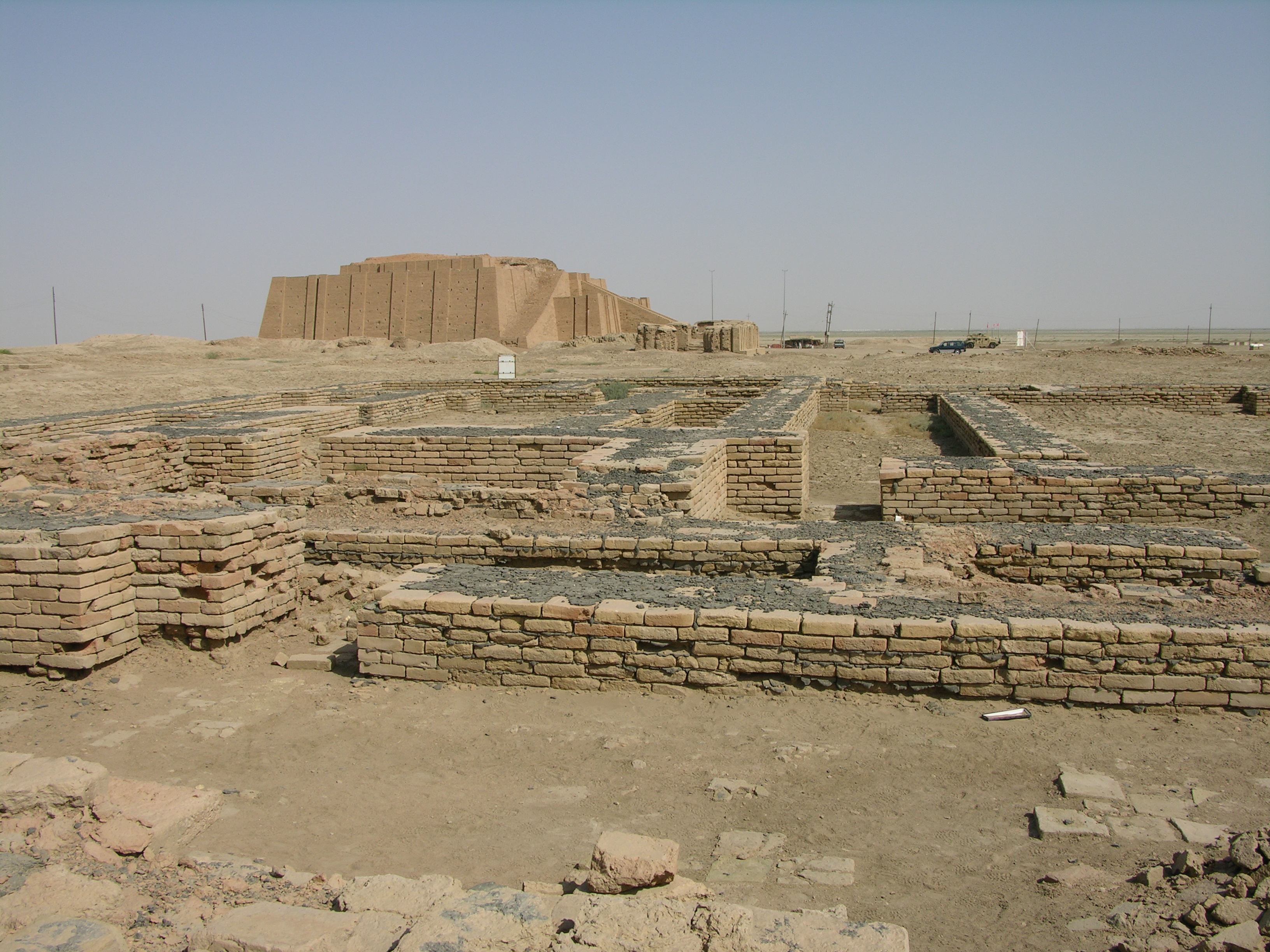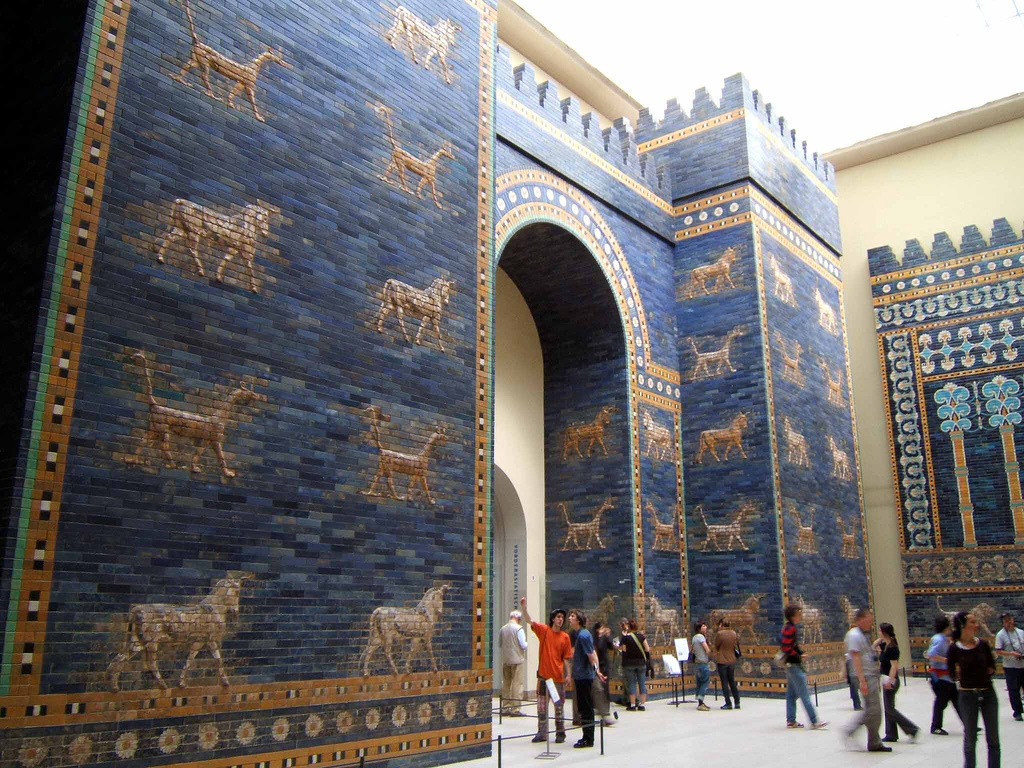1. THE RIVER CIVILIZATIONS.
The first civilisations, which used writing language appeared 5.000 years ago. They are called river civilistations, because they grew up along the banks of some of the largest rivers when neolithic peoples started to use water to irrigate their fields. As a consequence there were:- an increase in production.
- a population growth
- the apparition of cities.
- the Mesopotamian, located between the rivers Tigris and Euphrates.
Tigris river - the Egyptian, on the banks of the Nile valley.
- the Indian, along the river Indus.
- the Chinese, along the Huang He.
Polticial changes.
- The first states appeared, because it was necessary to develop a political power in order to organise the distribution of water, the upkeep of the irrigation canals and the defence of the cities.
- Power was held by princes or kings who controlled political and religious power. They were considered gods or intermediaries between gods and human beigns. They were helped by:
- civil servants
- armies
- Some kings conquered other peoples forming empires.
Economic, social and cultural changes.
Economy.
Was still mainly agricultural, but the abundant harverst allowed two important changes:- the development of other trades: pottery, weaving, silver produciton, stonemasonry, etc.
- the growth of trade, first between regions, later between different states, using large rivers and canals.
Became more complex and we can distinguish different groups according to their wealth or prestige:
- a minority group, which included the king, priests and high-ranking civil servants and held political power.
- the mayority of the popualtion which were obliged to pay high taxes
2. SPACE AND TIME.
The territory.
Mesopotamia, comes from Greek and it means,
the land between two rivers: Euphrates and Tigris. Both of them share
several characteristics:
We can distinguish two large regions:- Their source is located in the Armenian mountains.
- They flow parallel for a large part of their course.
- Both flow in the Persian Gulf.
- During the spring its water overflows their banks and fertilise the land.
- Lower Mesopotamia or Chaldea, located in the south and was occupied by the Sumer and Akkadian civilisations.
- Upper Mesopotamia or Assiria., located in the north.

Historical evolution.
Chronology: from 3.500 B. C. with the apparition of the first city-states to 539 B. C. with the conquest of Babylon by the Persian Empire.We can divide its history into periods of time defined by the people which controlled the region. We can distinguish two stages:
The first city-states.
The mesopotamian civilisation started around 3.500 B. C, when a people of unknown origin, the sumerians established themselves in Lower Mesopotamia.
The sumerians extended the crop growing areas with irrigation thanks to:
- the use of irrigation canals
- the use of dykes and walls to control the rivers periodic rises.
Irrigation canals, Iraq. Source: Nevit Dilmen stitched by Marku1988
As a consequence, a group of independent city-states appeared (Ur, Uruk, Lagash and Eridu). A city-state is a city which controls its surrounding territory and is politicaly and economicaly independent. These cities fought against each other.
 |
| Ruins of Ur. |
The first empires.
From 2.300 B. C., Mesopotamia was dominated by other peoples:
- The Akkadians (24th century-23 th century B. C) invaded the sumerian cities and a empire was established by its king Sargon I. Its capital was Akkad.
- The Babylonians (18th century-16th century B. C.) established a empire with capital in Babylon, located between sumer and Akkad. Its most important king was Hammurabi who created the first legal code.
- The Assyrians (16th century-13th century B. C. and 10th century-8th century B. C.) a warlike people from upper Mesopotamia. Its capital cities were Assur and Niniveh. The most important king was Ashunasirpal II (9th century B. C.).
- The Persians who conquered Mesopotamia in 539 B. C., turning it into one province of their empire.
 |
| Babilionia en tiempos del rey Hammurabi, siglo XVIII a. c. Licencia: File:Babilonia_de_Hammurabi-ES.svg Autor: User:Crates Licencia: CC BY-SA 4. 0) |
 |
| Assirian empire under Assurnasirpal II. Archivo https://upload.wikimedia.org/wikipedia/commons/a/ab/Assyrie_general_es.png Autor: © Sémhur Licencia: CC-BY-SA-4.0 |
Development of the sumerian city-state.
The rise of sumerian city-states.
A video about the Hammurabi's code.
Babylon 3d.
The rise and fallo of the assyrian empire.
A rap song about the history of Mesopotamia.
Politics.
During the sumerian period, every city-state was led by an ensi or prince-priest, who held the politic and religious power:- As a prince he ruled and was in charge of the distribution of water amongst the farmers.
- As a priest he oversaw the worship of the gods.
Economy.
The main economic activity was the irrigation-based agriculture and most of the lands belonged to the palace or the temples. They grew different crops in order to obtain:- food: cereals, vegetables and fruit trees.
- clothing:
Irrigation in ancient mesopotamia
4. SOCIETY, RELIGION AND DAILY LIFE.
Society.
Mesopotamian society was divided into three social groups:- The nobility, consisted of the ensi and his family, high-ranking civil servants and priests. The had extensive possesions and collected taxes.
- The people, free citizens that had their own property. It consisted of traders, civil servants, scribes, peasants and artisans.
- Slaves, they were prisoners of war or free citizens that had been slaves for not paying their debts. They had no rights and were consider things.
Religion.
The mesopotamian religion was polytheistic, they had many gods, among them, Anu, god of heaven; Enlil, god of the wind; Marduk, lord of the gods; and Ishtar, the goddess of love.Temples were considered the houses of the gods on Earth.
Culture.
Writing appeared in Mesopotamia circa 3.250 BC and is known as cuneiform script. Was done on soft wax tablets with a stylus that left wedge-shaped marks. The wax tablets were left to dry in the Sun.Sumerians also developed a number of sciences such as astrology, astronomy and mathematics.
5. CULTURE AND ARTISTIC LEGACY.
The cuneiform writing.
Writing language apperared in Mesopotamia in 3.250 B. C. It was called cuneiform (cuneus,- Mesopotamians wrote administrative and economic texts, poems and legal codes, such as the Hammurabi Code.
- In addition, they developed several sciences:
- Astronomy, creating a precise calendar.
- Maths, which was used for accounting.
Sumerian, Akkadian and Babylonian languages.
The sound of akkadian language:
Art.
Architecture. Their main characteristics were:- Use of poor quality materials such as adobe, which is clay mixed with straw and rectangular baked clay bricks.
- Use of the arch and the vault to roof the buildings.
- The main types of buildings were:
- Temples, which included a stepped tower that was the link between gods and men and used as astronomical observatory.
- Palaces that were surrounded by walls fitted with large gateways and many rooms.
- Statues of noble individuals such as the king Gudea de Lagash.
- Reliefs which represented figures of winged bulls with human heads, scenes of war and hunting.
 |
| 3d reconstruction of a ziggurat. |
 |
| Ur's ziggurat. |
 |
| Ishtar gate, a part of the walls of Babylon. |
Words in cuneiform
Write your name in babilonian:


No hay comentarios:
Publicar un comentario